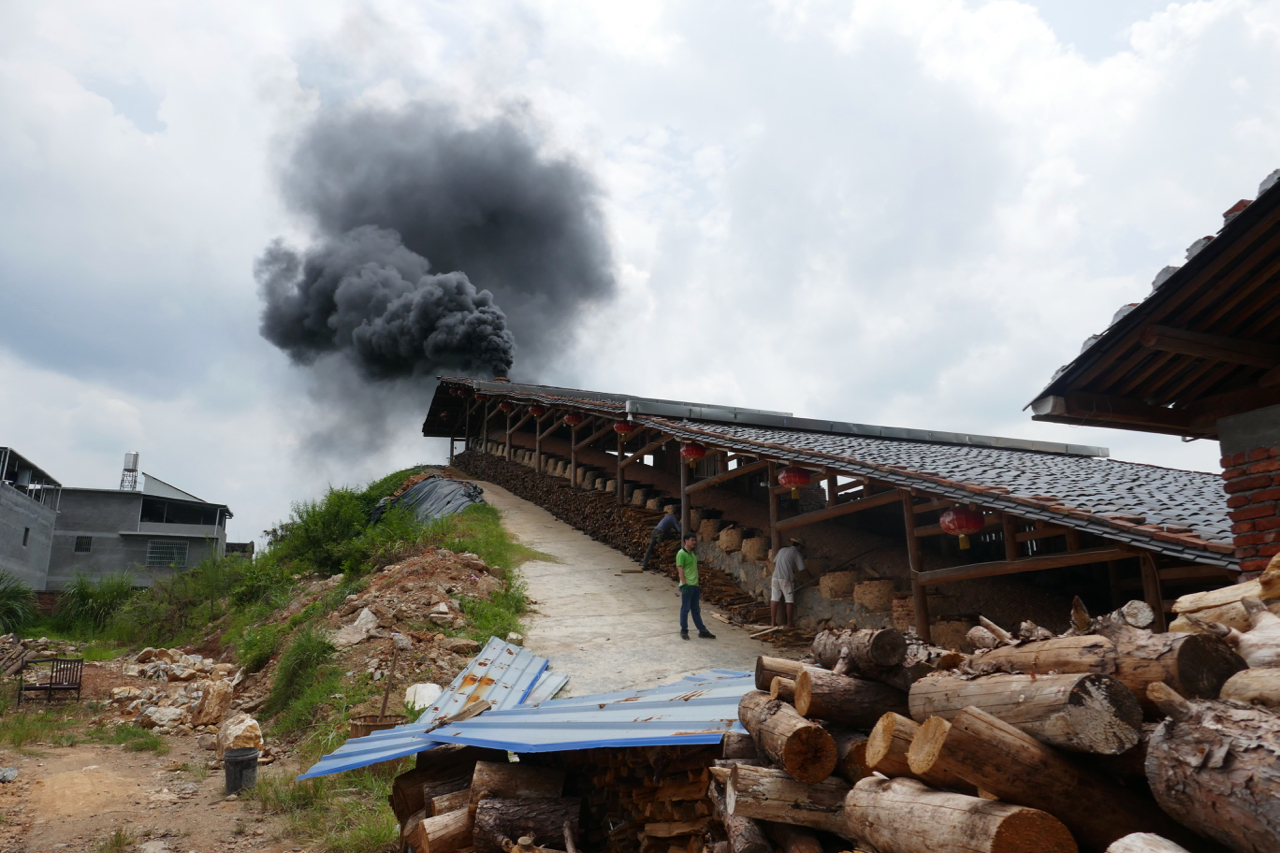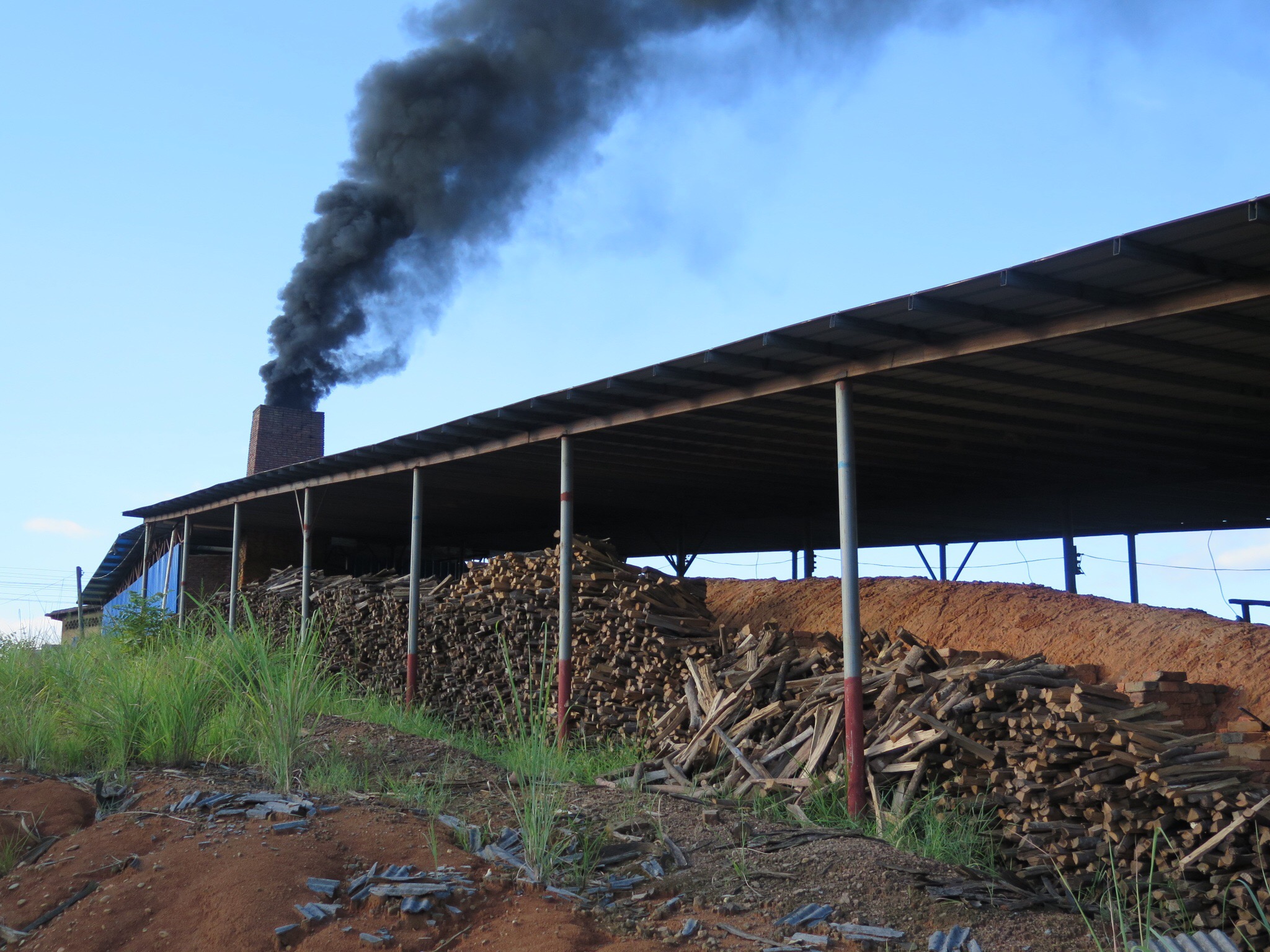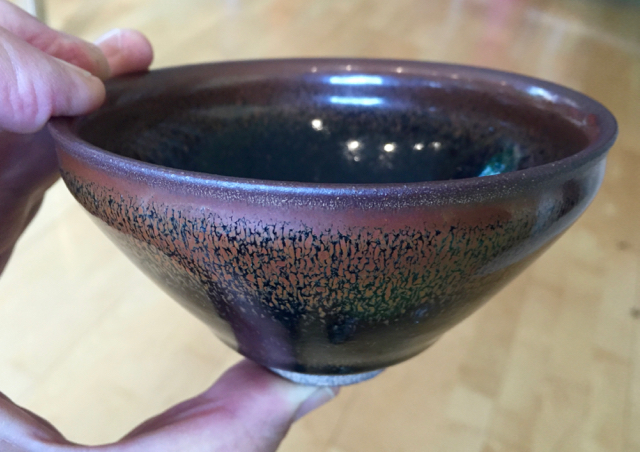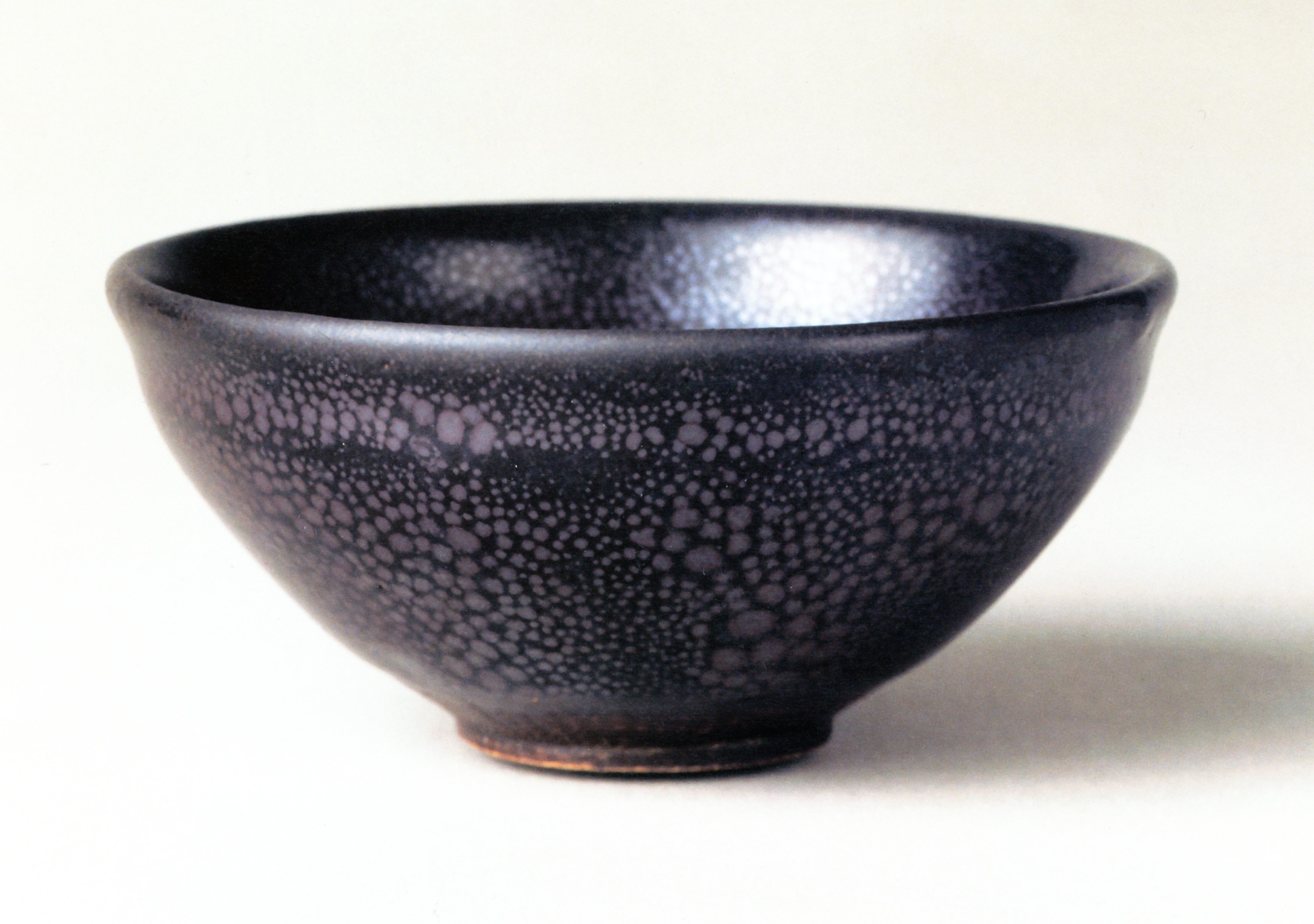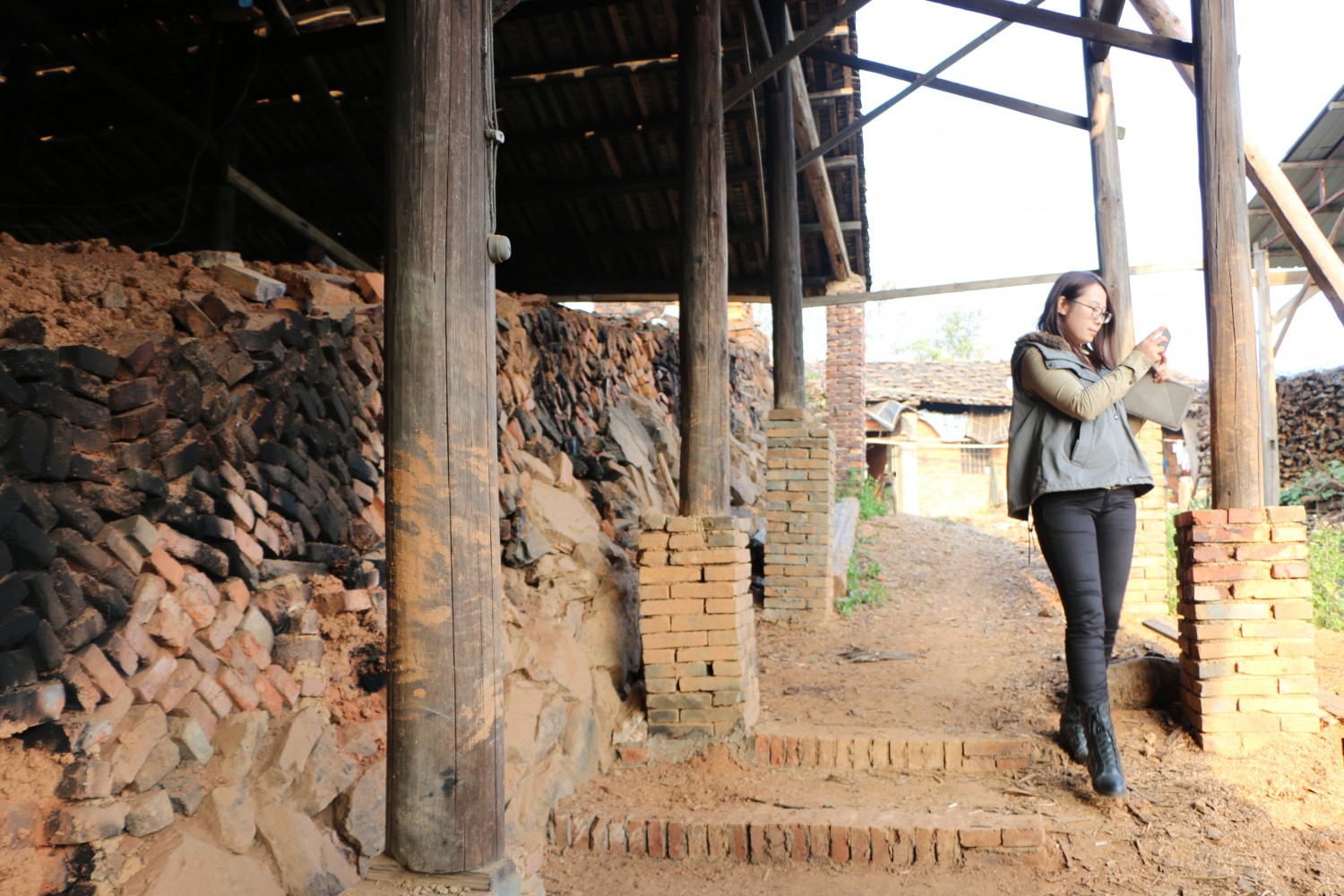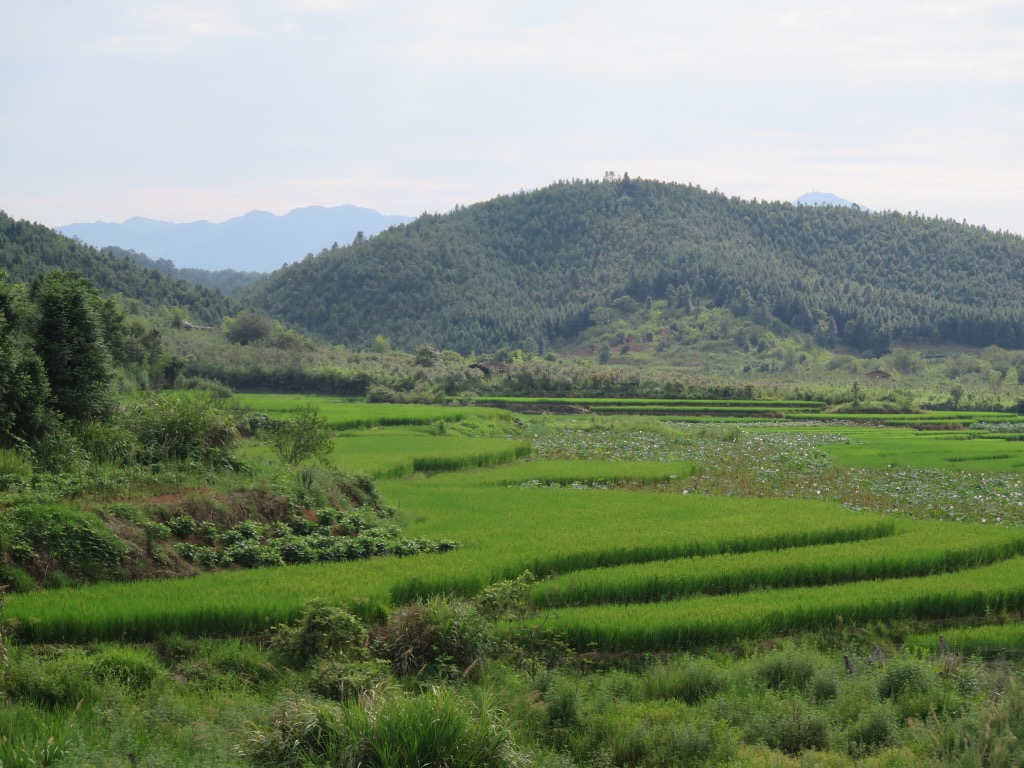 After my last trip to Shuiji and the source of Jian Ware, or as it is known locally Jianshan. The primary focus of this trip was to attend one of the firings of one of the two operational Dragon Kilns in the area. There was a secondary focus and that was on the 600-700 other potters in this small rural town who were producing Jianshan in electric kilns with reduction cooling.
After my last trip to Shuiji and the source of Jian Ware, or as it is known locally Jianshan. The primary focus of this trip was to attend one of the firings of one of the two operational Dragon Kilns in the area. There was a secondary focus and that was on the 600-700 other potters in this small rural town who were producing Jianshan in electric kilns with reduction cooling.
A Jian Ware Teabowl
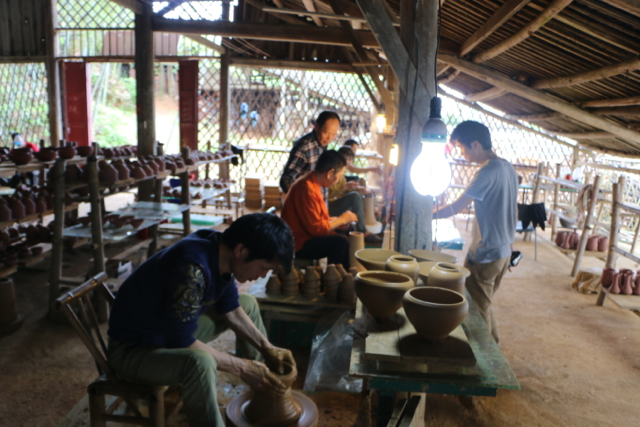 On my first rip to China in 2014 I made a trip down to the source of Tenmoku in a small valley outside of Shuiji in Fujain Province. In a future blog I will write about both that trip and the follow up trip in 2015. One of the things I was able to do on that trip was to purchase a small Jian Ware tea bowl.
On my first rip to China in 2014 I made a trip down to the source of Tenmoku in a small valley outside of Shuiji in Fujain Province. In a future blog I will write about both that trip and the follow up trip in 2015. One of the things I was able to do on that trip was to purchase a small Jian Ware tea bowl.
This bowl is typical of the Millions made in the multitude of kilns in this valley over some 200 years during the Song Dynasty. It is small, the clay is rough and it is surprisingly thickly thrown and turned. I can visualise its maker, sitting at his Chinese style kick wheel, throwing a large lump of clay onto the wheel, roughly centring it before separating enough clay to make this bowl. Like he had done perhaps 10.000 times before, at least 100 times that day, caressing the clay lump with his two hand, coercing it with gentle but persuasive pressure to the centre of the wheel head. He would then use his thumb to open it out, forming an indentation that had just a hint of the bowl of the come. Now he would shift his hands almost imperceptibly, using the fingers of his inside hand to again gently push the clay across the base and, very subtly, to lift up. At this very point his outside fingers would collect the clay and by using the sensitivity developed over years, pull the clay up and out to form the basis of his bowls shape. Continue reading “A Jian Ware Teabowl”
Why Tenmoku?
I came to clay later than most. I was a shift supervisor in a large flour mill and, along with my wife, I went to a local evening college to play with clay. My response to the medium was immediate, and I had no doubt that it was the means for my future creative expression. Four years later I became a full-time Art student at East Sydney Technical College (ESTC now the National Art School, but back then just “The Tech”.)
As a ceramics student in the 70’s we immersed ourselves in the Leach tradition, carting our copy of Leach’s “A Potters Book” with us everywhere. Pouring over every works and every image, debating meanings late into the night. We all came to believe that the standard to which we should aspire were the pots of the Song Dynasty.
Jian Ware – A short video.
To start the personal record of my journeys over the last 12 months I have put together some of the footage I have of the Kiln sites and Shard heaps around the Jian Ware site and further footage of the modern day production at one of the operating potteries using traditional techniques including raw glazing and firing in sagger in a wood fired dragon kiln.
https://www.youtube.com/watch?v=QN1oey6J9PA&feature=youtu.be Continue reading “Jian Ware – A short video.”
Rust never sleeps!
Rust Never Sleeps
by Leonard Smith
In the early 80’s I was in Manila, the Philippines, accompanying an exhibition of Australian Ceramics that was being shown at the Metropolitain Museum of Manila. Heading to a lecture I was to give at the Philippines National University, I hopped into a Jeepney, the main form of public transport at the time, known for their crowded seating and kitsch decorations, these wonderfully adorned vehicles invariably had ornate signs above the drivers head and in this case it stated “Rust Never Sleeps”. I have never forgotten that metaphor and it seems even more appropriate as the starting point for my journey into that “Heart of Darkness” of the ceramics world, the black glazes of Jian Ware which the Japanese Zen Tea Masters came to call Tenmoku (Temmoku). Continue reading “Rust never sleeps!”
The 80th Anniversary of J M Plumer’s Journey to Shuiji Zhen
This Blog was first published on the 27th June 2015 on the 30th Anniversary of Plumer’s Journey to Shuiji.
After my initial literature search for information on Tenmoku glazes it was the James Marshal Plumer’s book”Temmoku” that intrigued me most. Online searches indicated there were only two copies of Plumer’s book in libraries in Australia and one of those was at the University of Sydney. Discovering that fact, I immediately called the University organising for the copy they 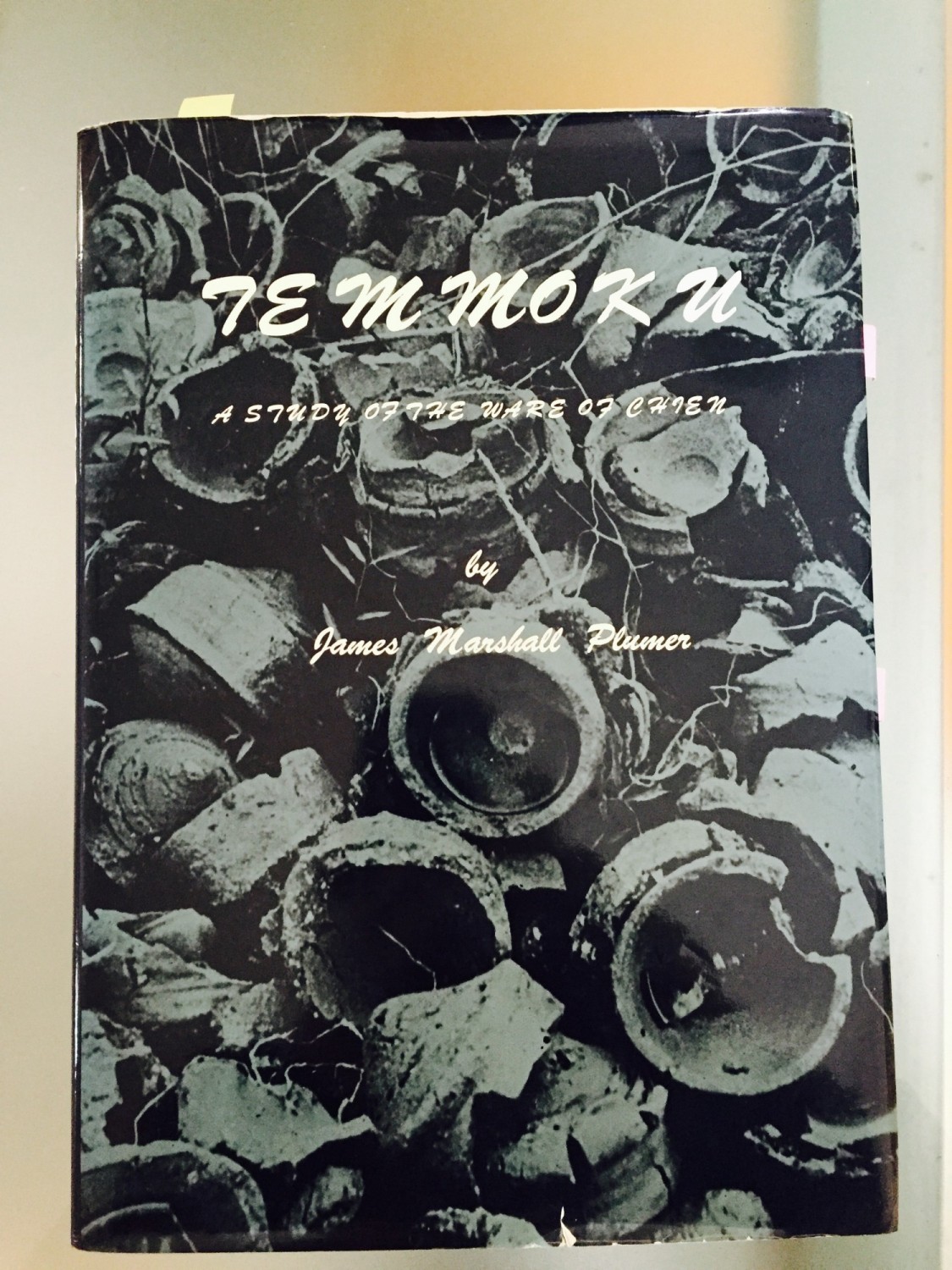 held to be brought out of storage. With nervous anticipation, as I had no idea of it’s contents, only its title, I rode my bicycle to the University of Sydney’s Fisher Library.
held to be brought out of storage. With nervous anticipation, as I had no idea of it’s contents, only its title, I rode my bicycle to the University of Sydney’s Fisher Library.
When I opened “Tenmoku” I felt an immediate rush of excitement, there in front of me was the tale of a journey of discovery by an American adventurer, later professor of Asian Art, James Marshal Plumer, into the wilds of China to discover the source of the Jian Ware. Plumer had been collecting the Black Jian (Chien) teabowls in the 1920s whilst working for Chinese Customs. I spent an hour in rapturous reading, getting more and more excited and I decided that I would trace his steps and discover for myself what it was that gave Jian Ware its uniqueness? I scanned the book and I left elated; my El Dorado on a USB stick in my pocket.
Continue reading “The 80th Anniversary of J M Plumer’s Journey to Shuiji Zhen”
